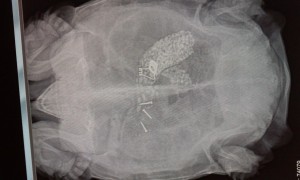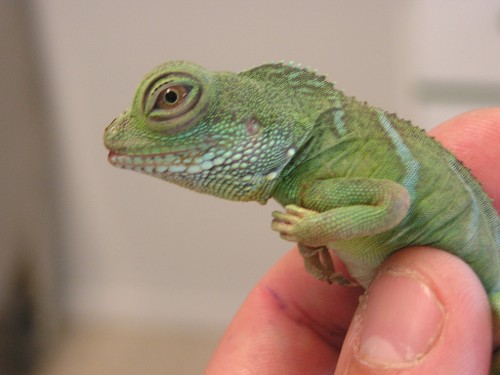There are about 7000 reptile species in the world which are divided into the following categories:Cocodrilya, Rhynchocephalia, Chelonia and Squamata
There are about 7000 reptile species in the world which are divided into the following categories:
- Squamata (lizards, snakes and Amfisbenidos).
Cocodrilya: covers 28 species in that family that includes 4 sub-families: alligator, crocodile, gharial, alligator. As the Caiman crocodile or little Cayman from South America only grows up to 2 meters it is the most popular species to keep as a pet. In general they are easy to breed but require huge terrariums and extreme handling. In captivity they usually feed every 3-7 days. They are very resistant to disease but if kept in overcrowded conditions and mismanaged they may show signs of septicemia, mycoplasmosis, chlamydia, fungal, virus and severe coccidiosis.
Rhynchocephalia: Therhynchocephalia also known as «beak headed» reptiles were once more common throughout the globe. Now though there is only one surviving family, the sphenodontidae. And of it, only one surviving genus: Sphenodon. The Tuatara (spiny back). Tuataras only live on the islands of New Zealand. Sphenodon punctatus has a gray or olive color and is spotted to varying degrees over the body. They have large heads compared to their bodies and can grow to a total of 60 centimeters.
Chelonia: Chelonia or Turtle (for all marine and inland aquatic and semiaquatic) and Tortoise (for land). There are 2 suborders with about 300 species divided between 13 families.
■ Cryptodira: S vertical retractable neck. (10 families)
■ Pleurodira: neck retracts horizontally or snake-like. (3 families)
In general these are the most common types seen in the clinic, not including endangered sea turtles.
Land Turtles: All in the Testudinidae family: One difference to water turtles is that the skin is thicker, elephant-like. The most frequent visitors to the clinic are the genus Testudo, or Testudo graeca (or tortoise) and Testudo hermanni (or Mediterranean Tortoise) They are very similar and only differ by the presence of bone spurs at the back of the leg and the flow scale which is unique (double in Hermanni). The caudal fins are wider and the Mediterranean has hard scales at the end of the tail. The T.mora is not from Greece but North Africa, Western Asia and Southern Spain (more numerous in Almeria, Murcia and Doñana), with several subspecies.
The T. Mediterranean is spread throughout the Balkans, Italy, northeastern Spain and the Balearics. They are easy to raise and maintain in simple terrariums but massive exploitation has resulted in their protection by the CITES convention. They are herbivorous, the only European phytophagous and will quite happily accept a good steak. They require a temperature of between 20-27 º C (although they can accept from 15 to 33 º C) and 30-50% humidity. They also need a sunny terrarium with shelters and should be left to hibernate from October to April. Sexual maturity is between 8-10years of age in males and 10-14 years in the females. The age can be determined by the weight/ size index (Jackson) or roughly by counting the growth rings of the shell. They grow to 30 cm and live between 50-80 years. Illnesses: sensitive to rhinitisand respiratory infections, so give special attention to the lower temperature range. 38% of turtles in general can carry Salmonella as a potential source of zoonoses.
Semi-aquatic Turtles: The Emydidae family is the most common and includes freshwater turtles of the genera Trachemys, Mauremys, Emys, Terrapene (or box turtle), amongst others Graptemys, Chrysemys, Dermatemys The freshwater turtles include the Trachemys, Trachemys scripta elegans (or redeared) and Trachemys scripta scripta (or yellow plastron) and Trachemys scripta troosti as well as another 14 subspecies and they originate from the Southeast USA. Their ideal habitat is near lakes, rivers and thick vegetation zones. They require a temperature of betywen 22 to 32C and 60-80-90% humidity. And hibernate below 20 degrees and preferably in the water. They weigh 5grs at birth and grow to 20-30 cm, (10-23 male, 17-28 female), Adult weight is 1kg in males, 1.5kg in females. They darken with age and live to be 30-45 years.
Living requirements: Aquaterrarium resembling a pond or lake at least five times the length of the tortoise and the depth greater than the width, in proportion threequarters water (50-70cm deep) plus one quarter earth (sand, ornaments.) separated by a ramp to climb, as well as a water filter, thermometers and pond plants. They are true omnivorous scavengers with a high requirement for additional vitamins and minerals. In captivity they can be given meat, fish, lettuce, apple slices and spinach. They need to eat one-fifth of their body weight daily and it is advisable to avoid excess prawns. Compared to other turtles they have a short digestive transit (1-2 days if the temperature is optimum). Sexual maturity is between 3-5 years (when they are about 16-19 cm) and they breed from May to July and lay eggs from the age of 5. Females lay between 4-6 eggs that are buried in the sand and hatch after 8-12 weeks. Ilnesses: hypovitaminosis A, otic abscess, ulcerative skin disease.
Terrapins or Boxturtles: Terrapins are cold-blooded reptiles with a tough skin, they breathe through their lungs. Out of 350 turtle species throughout the world, only one species of terrapin exists, which is further divided into 7 subspecies. Terrapins stay mostly in water and generally come out on land only to lay eggs and bask under the sun. The adult females lay eggs annually between April and July. During winter, they go into hibernation, and are active only when the weather is warm. These are the kind that are normally keeps as pets. The box turtle is the most common of all pet terrapins. They are very small (about six inches long) and thus easy to handle as pets. The male terrapins have longer tails than the female ones. They are omnivores and generally live close to the
places where they were born. They like to be out in the early morning and late afternoon
and they hibernate in winters.
Living requirements: ‘Terrapinarium’, a transparent water container made of glass. It should be roomy and the size should be bigger than a normal fish aquarium as terrapins grow at a high speed. An aquarium heater with thermostat to maintain the temperature at between 23.8 to 26.6°C is required. They often come out of water to get themselves dried or to sunbathe, hence an easy to climb and elevated dry place (island) of flat stone or rock should be provided. They can remain without water for sometime in the moderate sunlight or in the shade but not directly in hot sun. They are omnivorous, and so eat meat that includes fish, crayfish, earthworms, turkey, and chicken. Also, they eat a lot of vegetables and fruits. Illnesses: Terrapin health is largely related to its surroundings and feed. With incorrect keeping they may suffer from: sores of the oral-cavity, ear infections and severe respiratory infections. Blindness is another common ailment caused by the lack of vitamin D, which they absorb from the sunlight.
This article was published in Costa Blanca News.













 y ya podéis empezar a construir vuestra web ¡¡¡
y ya podéis empezar a construir vuestra web ¡¡¡








 La aparación de manchas tanto en el caparazón (parte superior) como en el plastrón ( parte inferior ) de los quelonios o tortugas abre muchas posibilidades en cuanto a las posibles causas. Solamente con la experiencia o el manejo clínico de estos reptiles sabremos diagnosticar el problema para un correcto tratamiento. En este caso nos remiten a nuestro hospital una Trachemys scripta scripta con problemas de dermatitis ulcerativa de plastrón. Remitió correctamente con antibióticos específicos así como con un correcto manejo de la higiene del agua del terrario.
La aparación de manchas tanto en el caparazón (parte superior) como en el plastrón ( parte inferior ) de los quelonios o tortugas abre muchas posibilidades en cuanto a las posibles causas. Solamente con la experiencia o el manejo clínico de estos reptiles sabremos diagnosticar el problema para un correcto tratamiento. En este caso nos remiten a nuestro hospital una Trachemys scripta scripta con problemas de dermatitis ulcerativa de plastrón. Remitió correctamente con antibióticos específicos así como con un correcto manejo de la higiene del agua del terrario.


